Street Calls of the Week
Introduction & Market Context
Sinch AB (STO:SINCH) presented its second quarter 2025 results on July 22, showcasing continued organic growth momentum despite significant foreign exchange headwinds. The company’s stock closed at 28.94 SEK on July 21, 2025, down 1.33% ahead of the earnings presentation, but has shown resilience with the price sitting well above its 52-week low of 15.70 SEK.
Following a strong first quarter where Sinch exceeded analyst expectations with EPS of $0.615 against a forecast of $0.57, the Q2 presentation reinforced the company’s growth trajectory while highlighting margin improvements and strategic AI initiatives.
Quarterly Performance Highlights
Sinch reported its fourth consecutive quarter of organic growth, with net sales increasing 2% organically year-over-year. However, reported net sales declined 6% due to significant foreign exchange translation effects. More impressively, gross profit grew 6% organically, with all regions and product categories contributing positively to this growth.
As shown in the following chart of quarterly net sales and organic growth trends:
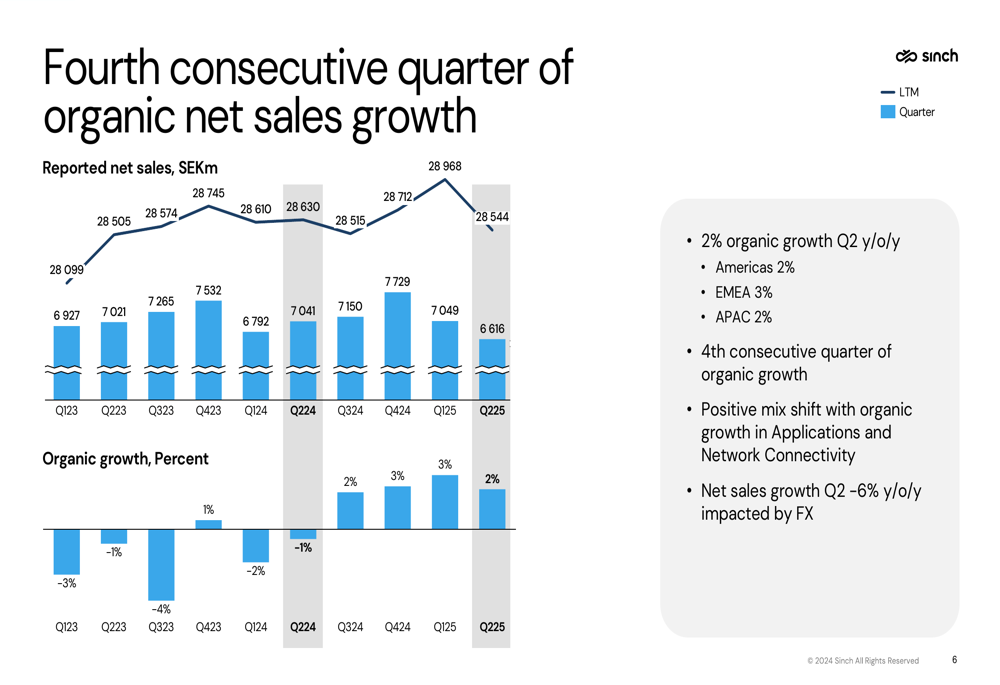
The company’s gross margin improved to 35.1% in Q2 2025, up from 33.1% in Q2 2023, reflecting a favorable shift in product and customer mix. Similarly, the adjusted EBITDA margin reached 13%, compared to 12% in the previous year. Adjusted EBITDA increased 8% organically year-over-year, although reported figures showed no growth due to FX translation effects.
The following chart illustrates the positive margin development trend:
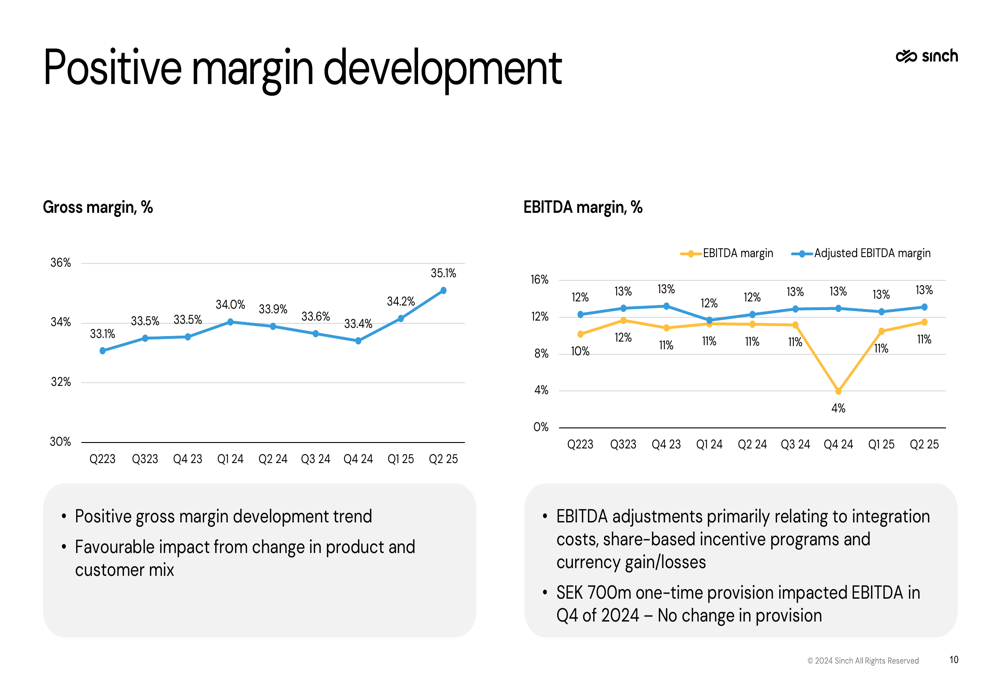
Detailed Financial Analysis
All geographic regions contributed to Sinch’s organic growth in Q2 2025. The Americas segment saw 2% organic growth in net sales and 6% in gross profit, with gross margin increasing by 2 percentage points to 35%. EMEA delivered 3% organic growth in net sales and 7% in gross profit, with gross margin rising 2 percentage points to 33%. Meanwhile, APAC achieved 2% organic growth in net sales and 3% in gross profit, with gross margin improving by 1 percentage point to 41%.
The breakdown of gross profit by region and product category is illustrated in the following chart:
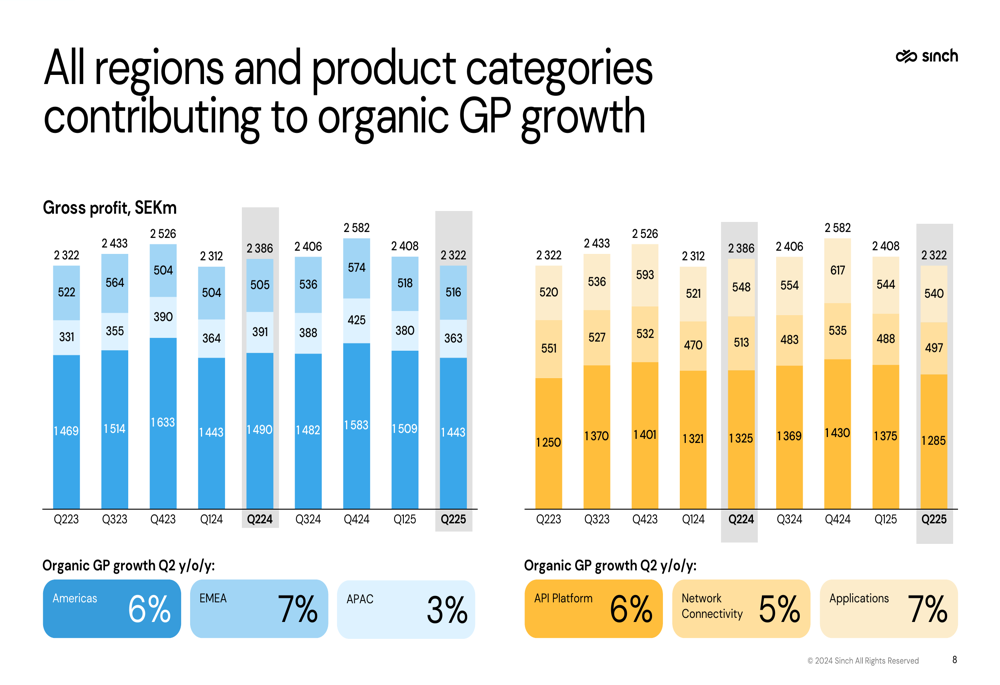
Sinch demonstrated strong cash flow generation in Q2, with free cash flow of SEK 523 million and cash flow conversion of 60%. On a trailing twelve-month basis, cash conversion is approaching the company’s target range of 40-50%. The company noted that net working capital is temporarily elevated due to a cost savings agreement with a large supplier in Q1, which is expected to normalize in coming quarters.
The company’s comprehensive income statement provides further details on its financial performance:
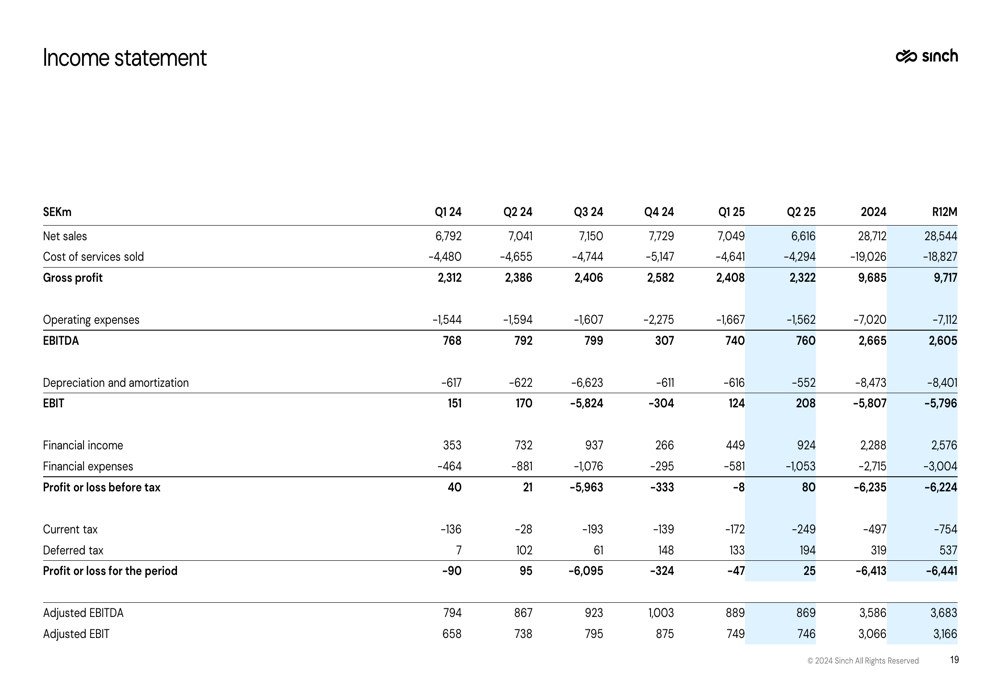
Cash flow details reveal the company’s ability to generate substantial operating cash flow:
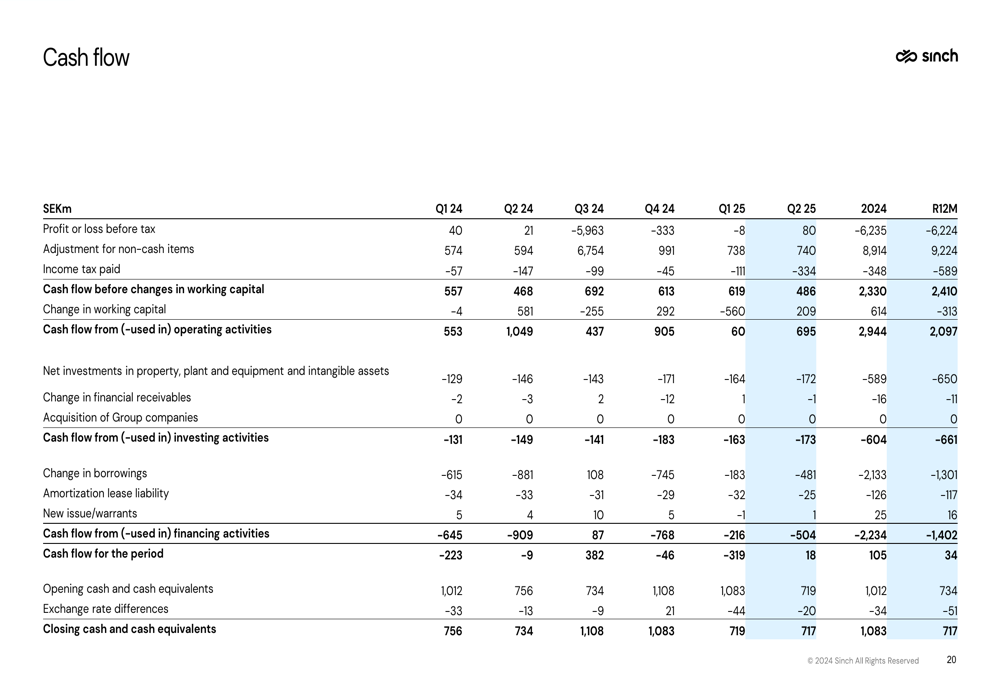
Strategic Initiatives & AI Investments
A significant portion of Sinch’s presentation focused on the company’s advancements in artificial intelligence capabilities. The company has implemented its Model Context Protocol (MCP), which enables autonomous AI agent communication across Sinch’s global platform. This technology codifies decades of communications expertise from over 900 billion annual interactions.
Other AI innovations include Conversational Solution packages offering pre-configured AI-enhanced bundles, AI-powered email quality assurance with automated accessibility compliance (Mailgun Inspect), and new cross-channel summarization and auto-translation capabilities for contact centers.
Sinch is also expanding its AI ecosystem through strategic partnerships. The company’s SMS technology powers Salesforce (NYSE:CRM) Agentforce’s autonomous agents with predictive engagement and intelligent lead qualification. Additionally, Sinch’s integration with Microsoft (NASDAQ:MSFT) Dynamics Customer Insights enables AI-orchestrated customer journeys at scale.
The company’s strategic focus remains on three key pillars for value creation: growth reacceleration, EBITDA margin expansion, and active capital allocation. This approach has contributed to the strengthening of Sinch’s balance sheet, with the net debt to adjusted EBITDA ratio improving to 1.3x in Q2 2025, down from 1.7x in Q2 2024.
The following chart illustrates this deleveraging trend:
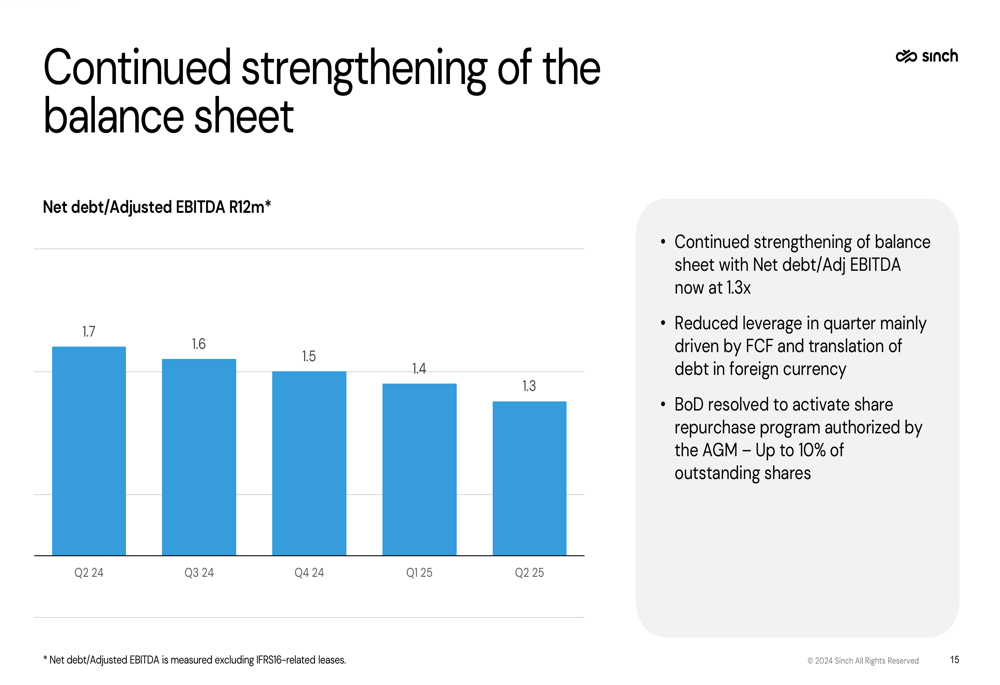
Forward-Looking Statements
Sinch reaffirmed its mid-term financial targets of achieving 7-9% organic growth in net sales and gross profit year-on-year by the end of 2027. The company also aims to reach an adjusted EBITDA margin of 12-14% by the end of 2027.
In a significant development for shareholders, Sinch’s Board of Directors has resolved to activate a share repurchase program authorized by the Annual General Meeting. This program allows for the repurchase of up to 10% of outstanding shares, reflecting management’s confidence in the company’s financial position and future prospects.
The company’s Q2 2025 results align with the positive momentum seen in Q1, where Sinch exceeded analyst expectations. CEO Laurinda Pang, who had previously emphasized the importance of Q1’s results as a foundation for achieving midterm guidance, continues to focus on executing strategic plans to drive sustainable growth.
With its continued organic growth, improving margins, strong cash flow generation, and strategic investments in AI capabilities, Sinch appears well-positioned to navigate market challenges and capitalize on opportunities in the evolving digital communications landscape.
Full presentation:
This article was generated with the support of AI and reviewed by an editor. For more information see our T&C.
